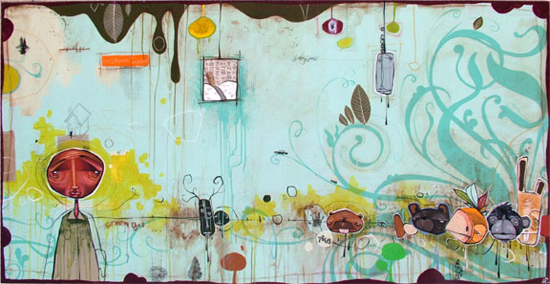I pick up the phone and say hello. I then hear; “What the hell is a social object?” I check the number and realize it is a friend of mine (not at all involved in online marketing) and told him that my definition comes from Hugh MacLeod that states a social object is:
. . . the reason two people are talking to each other, as opposed to talking to somebody else
He then says; “So our friendship (shared experiences) could be considered a social object?”
“Yes”, I reply. (He had been talking to one of those “marketing freaks” at work and had heard the term being batted around and was perplexed.)
The implication in Hugh’s definition is that there is interaction involved. This also just happens to be the primary strength of the Internet when compared to other mediums; it promotes interaction. Interaction can be in the form of entertainment (Paltalk), information (Howcast) and/or communication (Digg). The Internet as the platform combined with the maximum amount of peers and the maximum exposure to products/services makes the concept of social objects essential.
I want to clear about this. In my opinion, the Internet extends a person’s social network the same way having a job does. You will solicit/give advice on products/services and you’re most likely not sharing intimate details with people at work or within your social network. (This is of course not true for young punks who have not learned their lesson yet.) According to a recent study:
Word-of-mouth is highly influential on purchases made by at-work consumers, with 95.6% indicating they regularly or occasionally give advice to their peers about products and services, and 92.9% indicating they also seek
This makes sense as we all spend the majority of our waking hours, at work. The objective for marketers is to create products/services that are inherently viral and therefore become social objects. This is of course easier said that done and yet possible for most products. Even blenders.
